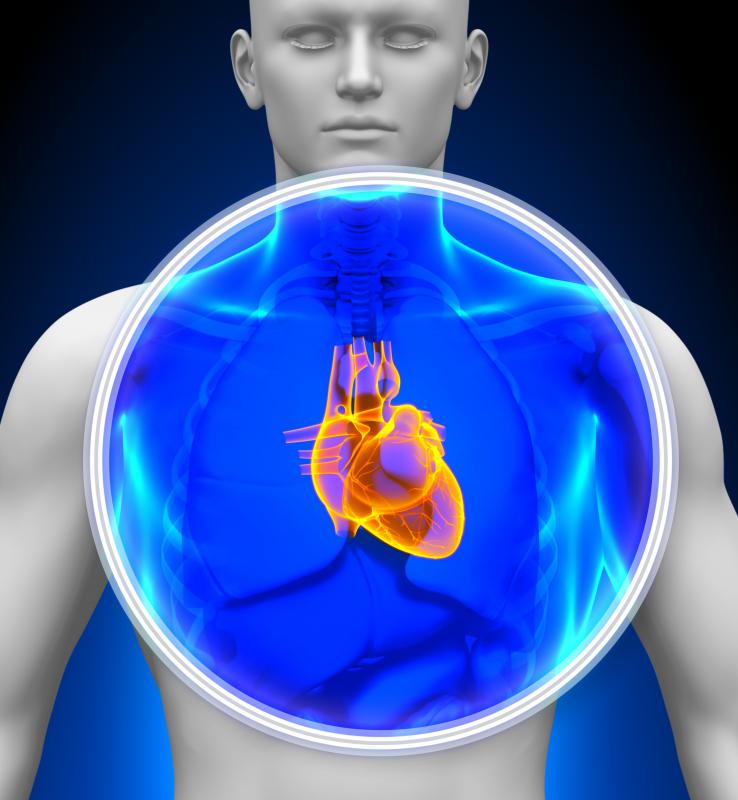At TheHealthBoard, we're committed to delivering accurate, trustworthy information. Our expert-authored content is rigorously fact-checked and sourced from credible authorities. Discover how we uphold the highest standards in providing you with reliable knowledge.
What is the Left Ventricle?
The left ventricle is one of the four chambers of the heart and it has many distinct features. Its principle function is to receive oxygenated blood from the left atrium, through the mitral valve. It will then pump this blood into the aortic valve. From there, the blood flows into the aorta and then to the rest of the body. With the rest of the circulatory system, the left ventricle is thus responsible for getting oxygenated blood to all the tissues, and it is often thought of as one of the most important parts of the heart. It also may be called the main pumping chamber since it well exceeds the size and is much more muscular than the right ventricle.
Many people have the mistaken impression that the ventricles are the top chambers of the heart, but actually these pumping chambers are located below the atria. Drawings of the heart frequently depict the left ventricle and right ventricle as being similarly sized, but in the normal heart, the left ventricle is bigger by a considerable amount. The borders within the heart of this chamber are the mitral valve, which is between the left atrium and ventricle, and the aortic valve, which arises from the top of the ventricle and separates it from the aorta. The ventricle is also separated from the right ventricle by a thick wall called the septum.

As mentioned, the left ventricle is an extremely important part of the circulatory system. Its muscularity is required so that the heart can contract and relax, allowing for blood to both enter it and leave it in an efficient way. Any inefficiency or morphological problems with this part of the heart can cause significant problems.
There are some congenital heart disorders that affect sizing of the left ventricular and the most potentially damaging is hypoplastic left ventricle. In this condition the chamber is too small and cannot adequately perform its work. This condition is so severe that it is usually not reparable with surgery, though there are palliative surgeries that are increasingly successful, like the Fontan surgery. Many people who have this condition do require a heart transplant at some point.

Other problems may be congenital or acquired. Sometimes the left ventricle enlarges (hypertrophy), and this means the muscles work less efficiently. This too may be a condition that requires transplant, or some other surgeries like removal of part of the ventricular muscle have been used with some success. Defects or dysfunction in the left atria, mitral valve or aortic valve may also impair ventricular function and require repair. It’s fair to state that any problem anywhere in the heart may create damage to the left ventricle, since the heart operates as a system and depends on all parts to work.
AS FEATURED ON:
AS FEATURED ON:

















Discuss this Article
Post your comments